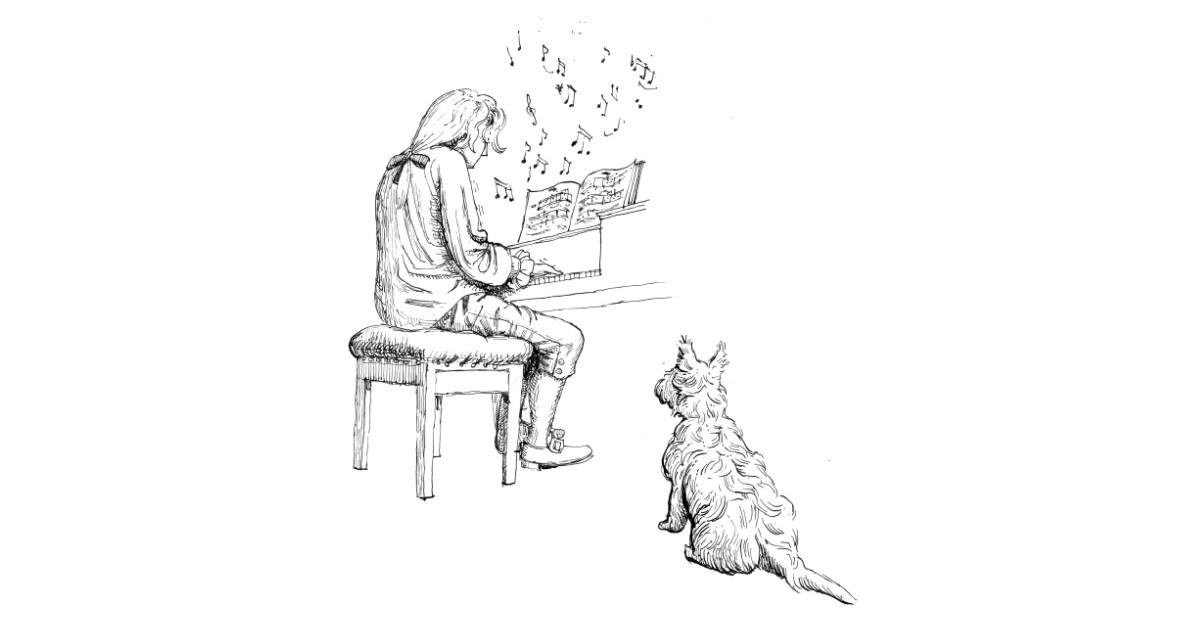Why does my Puppy like Mozart?
(And what does this tell us about classical architecture?)
We recently bought a puppy and discovered that he much prefers classical music to pop. You might think that I have brainwashed our new pet, but we only had him a few days when I discovered this, and most of the music played in our house is instigated by my teenage children whose taste is decidedly unclassical. I am not alone in this discovery; after a short amount of research I found that numerous studies revealed dogs like some types of music and not others. One such piece of research showed that shelter dogs were found to be more relaxed and quieter when they were listening to classical music and barked more when heavy metal was playing.
From this it seems that dogs are born with discernible musical tastes which effects their moods and this seems to be consistent throughout the species. It would be interesting to know whether similar generalisation can be applied to humans. Certainly, artists as great as Bach or Mozart seem to transcend all cultural barriers and studies have shown that their music has a therapeutic effect. Classical music has been successful piped into crime ridden areas to reduce the instances of violence.
Various types of music certainly produce particular moods in us - it would be interesting to know which types of architecture affect us in in different ways. Architecture does affect your moods, a brutalist housing development will put you in a different frame of mind to Renaissance church or Rococo boudoir. It would be amazing to discover how this works and could be a huge benefit to society in so many ways. Just imagine a style of architecture which could reduce crime and appeal to everyone solely through the use of materials, proportion and detailing...the astute readers of this blog might have already worked out where I am going with this! For me, classical architecture, like classical music, has this effect and judging by the popularity of cities like Venice, Florence, Rome, Paris and Bath, I'm not the only one.
I don't want to appear narrow minded and I appreciate that my thoughts on this are too biased to be of any use. However, I think many, if not all, architects have been given a bias from their education which needs to be overridden. To neutralise these prejudices, maybe we should judge buildings on whether it is therapeutic or stressful to look at them. It would be an interesting way of looking at architecture. For me therapeutic building include works by Bramante, Palladio, Gibbs, Chambers and Nash. This way of looking at architecture is not new; it was central to the neo-classicist's rejection of baroque during the mid-18th century. For example, Robert Adam's brother James criticises the overcrowded decoration at St Peter's Basilica because, he felt that...
"... the eye is quite fatigued with a long examination of minute parts that seem to be pieces put together by chance... the entablature is broke at every instant and leaves no range, no repose for the eye."
He also dismisses Borromini and Michelangelo for similar faults.
I've often thought that a good building is one that you like even if you have a headache and my aim is to design architecture which is peaceful to look at or 'easy on the eye' to use a hackneyed phrase. This seems an obvious endeavour but within the profession, architects are praised for being 'challenging' which is quite the opposite. People want Mozart but they are given Stockhausen instead. Great as Stockhausen is, you need to be a music enthusiast to like him, and that's the problem, the frozen music of our cities needs to appeal to as many people as possible and not just the few who are interested in architecture.
Specialists in any artistic field can have a have a habit of developing a different taste to the public at large which they snobbishly dismiss as bourgeois and 'too easy'. A film critic is not going to enjoy a slushy romcom crowd pleaser, they will prefer a tedious arthouse film which will be undoubtedly worthy but utterly boring to most 'normal' people. Architects are just the same, they think and dream about buildings day and night which gives them an idiosyncratic taste. And it's a problem because architects with their minority taste get to decide what buildings should look like. To get over this, architects should aim to appeal to a broad range of people instead of just themselves. Perhaps then we would design buildings which, like the music of Mozart, give us a sense of peace and stop our inner dogs from barking.






